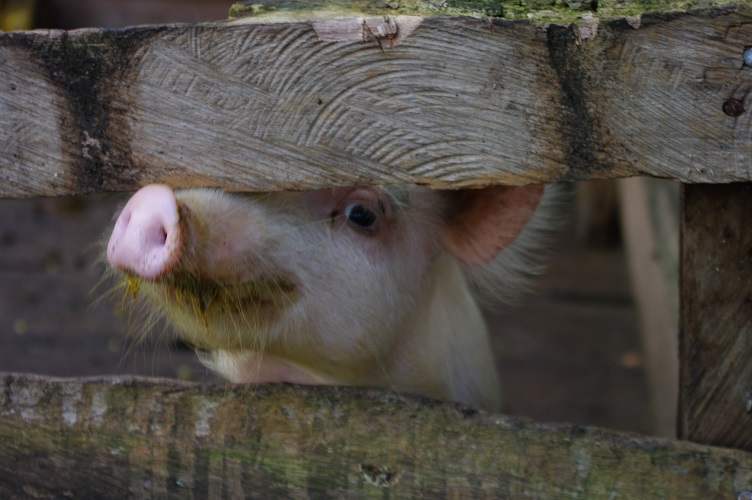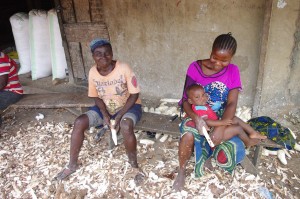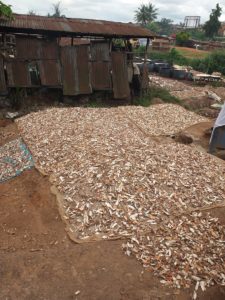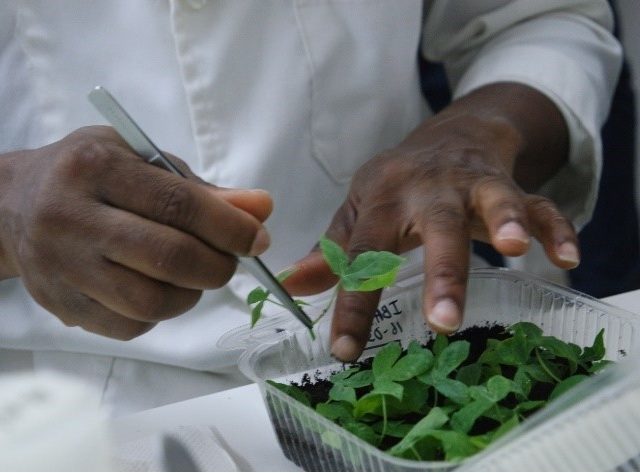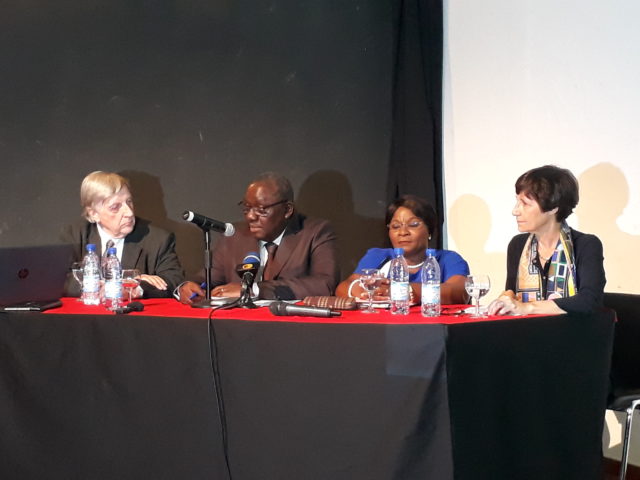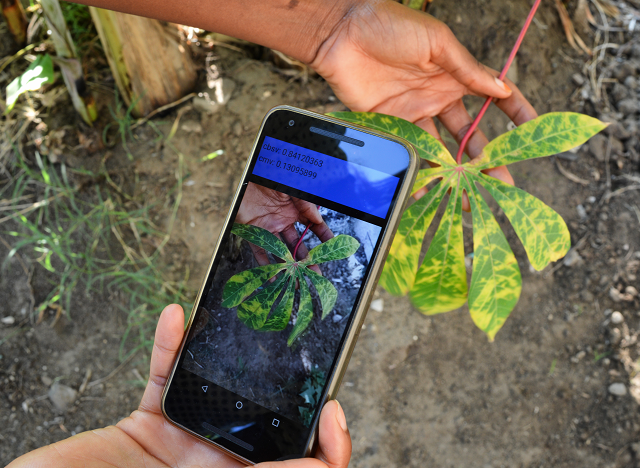Nigeria, the world’s top cassava producer, has launched a plan for cassava processing with the objective of strengthening the cassava industry on both local and international levels. It pays particular attention to the utilization of by-products of cassava processing, an area with significant potential. The Global Cassava Partnership for the 21st Century (GCP21), in collaboration with Nigeria’s Ministry of Agriculture and Rural Development (FMARD), has organized a meeting of experts in late October that will lay the foundation for a system for manufacturing cassava-based livestock feed. Participants in the meeting, which is supported by RTB, will study the commercial feasibility of a system that could then be applied in several African countries.
Cassava is the second most important food crop in the least developed countries and the fourth most important source of food energy in the world after wheat, corn and rice. It is generally grown by small farmers, who appreciate its tolerance of drought and poor soils, which is one of the reasons cassava has been dubbed the “crop of the 21st century.” Cassava farming is also expanding – as the FAO reports in its guide Save and Grow: Cassava, world production has increased 60% since 2000 to a projected total of 282 million tons in 2012 (of which 52.5 million tons were forecast for Nigeria).
That international organization also pointed out that the crop holds great post-harvest potential: “Food for the household, feed for livestock, and raw material for a wide array of value-added products – from coarse flour to high-tech starch gels – cassava is truly a multipurpose crop.” The roots and leaves can be eaten directly or processed into flour and semolina, while the root starch has many industrial applications. Both the roots and leaves can be fed directly to livestock, or used in the production commercial feed. As the FAO report notes: “Animals raised on cassava have generally good health, good disease resistance and a low mortality, and require few if any antibiotics in their feed.”
As part of the cassava transformation plan with Nigeria, GCP21 hopes to address the issue of by-products from cassava processing, especially the peels, to convert common wasted products to income-generating products. “When the transformation plan is completed, the production of cassava by-products in Nigeria is expected to reach two million tons per year… this is the perfect time to set up a feed manufacturing system on an industrial scale,” said Claude Fauquet, GCP21 director. To accomplish this, they will need to engage an array partners, especially the Ministry of Agriculture, research institutions, the private sector and investors.
The GCP21 meeting will be held October 28 to 30 at IITA headquarters, in Ibadan, Nigeria, with support from RTB, ILRI, the CGIAR research programs HumidTropics and Livestock and Fish, IITA and FMARD-CTA. Fifty cassava and cattle specialists will gather there to study the commercial feasibility of a system for producing livestock feed from cassava. Particular attention will be paid to local processing technologies, small-scale producers and identifying partners. Among the meeting’s expected outcomes are a roadmap for the development of the system, an action plan for Nigeria and pilot projects to address issues specific to certain African countries.
Contact :
Dr. Claude Fauquet, Director of GCP21 – c.fauquet(at)cgiar.org
